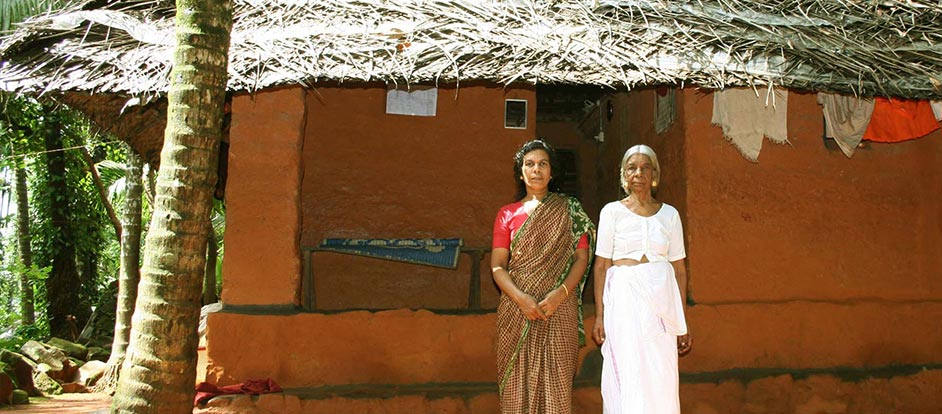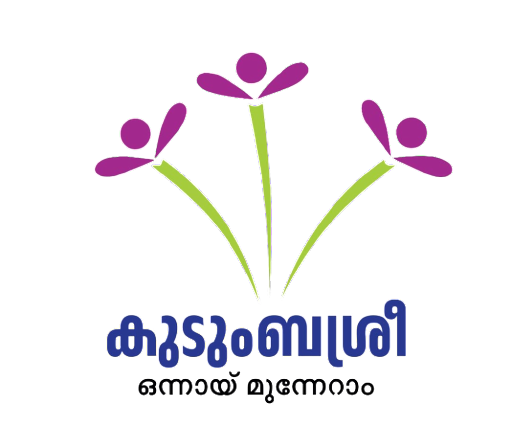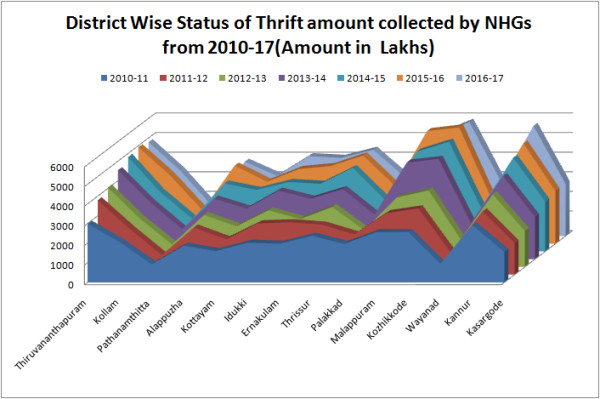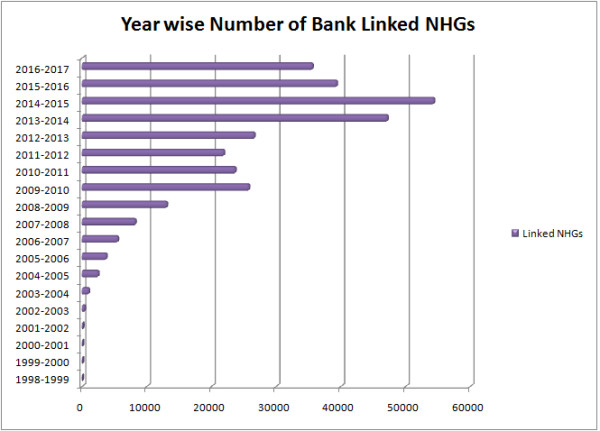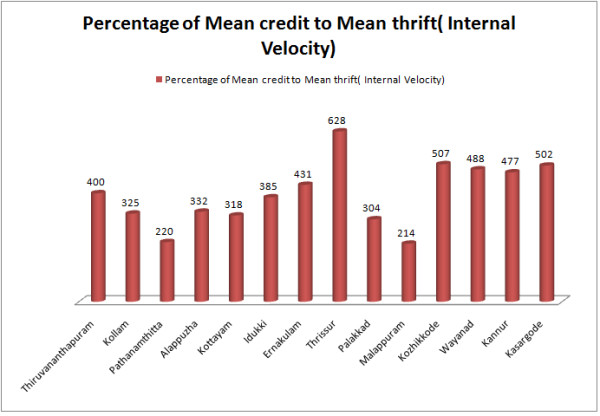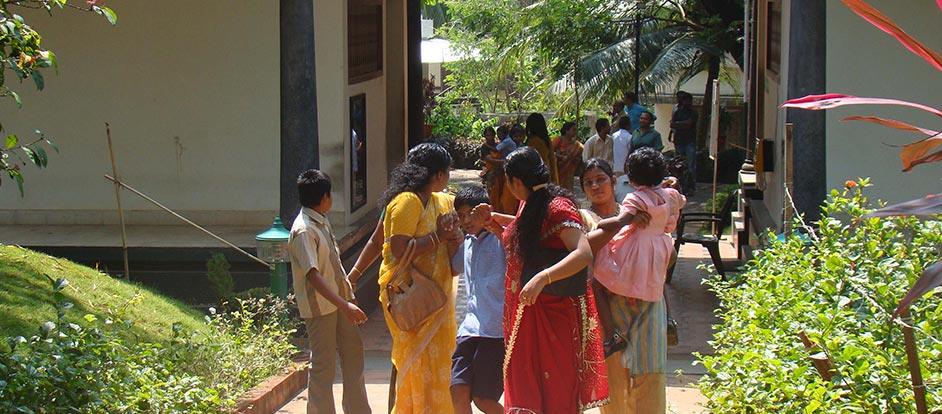While arguably not part of the development of agricultural and nutriti onal security, unless social security is assured, all the efforts at empowering women can go to waste. Addressing the severe personal, domestic, adolescent and social problems plaguing the Adivasi communities in Attappady became imperative in the main process of the work. Trainings and interventions have been made with respect to adolescent suicides, child marriages, domestic violence, alcohol distilling and sale. These interventions were made with the support of Animators and Ooru samithies. Adolescent suicides were a major area of concern. Adolescent programmes were held with the support of Social justice Department. Several programmes and workshops were held for adolescents to explain their rights and then later one to one interactions were held with a number of children and young adults.
Gender training has been facilitated for Animators where the major discussions focused on social construction of gender, natural resources and gender, poverty and gender and agriculture and gender, women and division of labour. As a follow –up on the discussions about gender, several interventions were made in the areas of domestic violence and alcoholism, dropping out of children from schools, child sexual abuse, trafficking, child marriages, alcoholism, etc.
The major social action intervention has been the strike against alcoholism organized by the Thaikulasangha (Mother’s Traditional Organization), resource agency for gender. The strike is being conducted against the TASMAC Beverages and bar in Aniakatty selling spurious and toxic brew which has led to the death of several men. This agitation has succeeded in closing the outlet giving a moral boost to the Adivasi women. A Legal Aid Centre has also been established to provide legal aid to various women subjected to domestic violence.
Improvement of Health and Nutrition
Health issues naturally received the foremost importance as the Project was formulated mainly to address and find solutions to the infant mortality and women’s health problems . A computerized system called Jatak was developed to continuously monitor the weight and height of the children which was measured by JPHN and read out in the mobile by NRHM. But several children weight was not being recorded. There was great resistance for the tribal families to seek access to health care. Massive mobilization of children was undertaken from all hamlets to PHC’s and the nutritional rehabilitation centres. Nutrition Rehabilitation Centres (NRC) had been established by NRHM with the technical support of UNICEF. Intera ctions were undertaken in each hamlet with mothers about the importance of weighing SAM(Severe Acute Malnutritioned) and MAM (Moderate Acute Malnutritioned) children and the need for special attention for such children. A special food which was mix of ragi, rice, black gram prepared by NRC was supplied to children. It was monitored by animators with a team of anganwadi workers and JPHNs. Pregnant women who had never visited hospitals were taken to hospitals for screening. A special drive was conducted and Rashtriya Swasthya Bima Yojana (RSBY – a government run health insurance scheme) cards were distributed to all families. The Project Management Unit (PMU) functionaries are trainers for the CSAM (Centre for Sustainable Agriculture Mechanization) programme and are responsible for training the Para Professionals. The production of Energy Dense Special Food will be produced by Sholayur Panchayat Samithi and the proposal has been submitted to Social Justice Department. The unit will not only cater to 34 SAM children in Attapady but cater to children outside the State if needed.
Mental illness is increasing alarmingly in Attapady, probably due to the stress and strains of coping with poverty and domestic violence, and suicidal tendencies are common among the young and middle aged alike. Several women have been taken to Thrissur medical college for treatment with the help of Animators who accompany them.
Camp for Young Adults Educational Interventions
Education was taken as a major area of intervention by the project. Thousand children were interviewed on their educational status and needs. It was found that most of the children studied in the hostels of residential schools both in Attappady and in far off places in other parts of the state. The number of dropout children was very high mainly due to all sorts discrimination and abuse and delay in receiving stipends and so on. The condition of hostels, both government run Model Residential Schools (MRS) and private residential schools was abysmal. They were overcrowded with no basic facilities like bathrooms, toilets, study rooms, etc.
This study was presented before the Agei(Mothers’) Education Committee and the women presented their opinions about the study. The Agei Committee comprises of women looking after education in the Executive Committees of the Oorusamithies. They were trained in the basic tenets of Right to Education and how the mothers committee can function like the school management committee to look into the infrastructure in the school, student teacher ratio, absenteeism of students, lack of toilets and purified drinking water, lack of teachers, lack of inclusiveness leading to dropping out of children, lack of quality in education.
Bridge School Stayin Camp for youngsters prior to the opening of the Bridge School Three bridge schools were opened to integrate dropout children into mainstream education.
At present 63 children are studying in the bridge schools and residential facilities are provided for children to study. The teachers have completed TTC and belong to the tribal community and hence curriculum is transacted in the tribal language. The classes began in the camp mode to attract children towards learning and educational experts from various disciplines taught the children. At present they are being registered to appear for the Equivalency Exams conducted by the Literacy Mission of primary, upper primary, the 10 th and 11th standards.
Special coaching for 10th Standard Students
Special coaching was initiated for the 10th standard students of Pudhur, Agali and Sholayur schools to assist them in facing the exams. The classes were provided on Saturday and Sunday by CIGI, an educational institution which works with educational attainment for the most deprived children. Residential classes were held in study holidays andChristmas vacation for 10th standard students.
Block Resource Centre and Youth Resource Centre
Yet another social enrichment and empowering initiative started is among the Adivasi youth who are not only unemployed but also despondent. Several Resource Centres to handhold them to develop personally and find meaningful livelihoods and self confidence are being developed. Youngsters who have shown leadership qualities are employed to take up this challenging work. The Block Resource Centre comprising of a Child Resource Centre, Youth Resource Centre, Gender Resource Centre and Legal Aid Centre has started functioning. Students of the Bridge School have been trained in taking up socially relevant campaigns and getting involved in the agricultural and cultural rejuvenation work in Attappady. For example a play has been developed portraying the issue of child marriage and suicide and this is being performed in all hamlets, schools and hostels.
The play “NamathuJeddu” (Our Voice) being played in the Agali Residential School
Youth Clubs are being initiated in the hamlets. One surprising offshoot of this process is the formation of Kurumba Youth Resource Centre which has decided to focus on livelihood issues and development. Public Service Commission coaching is being held for 35 young men and women with the support of the Brilliance Centre in collaboration with the Forest Department.
Skill Development
In order to solve the acute problem of unemployment among the youth in At tappady Skill Development trainings were undertaken with support of Nettore Technical Training Foundation. The major trainings were on CNC Lathe, fitting and turner in Dharwar, Bangalore and Thalassery. 90 youngsters have undergone training but the youth are finding it difficult to take up placements in cosmopolitan cities like Bangalore.
Co-operation and Convergence with Other Departments
The success and social acceptance of the Comprehensive Tribal Development Project of the NRLMS can be gauged by the generous financial and other support it has received from many government departments. In fact the sincere and capable Community Cadres built up through trainings and first hand field experiences have already become indispensible in the overall development processes in operation in Attappady. Smart Surveys and Community Based Management of Severely and Acute Malnourished children are being implemented in convergence with the UNICEF, National Health Mission and ICDS. For agriculture, the funds to purchase seeds were provided by Tribal Department. Community Kitchen is being supported by Social justice Department, Social Security Mission and Integrated Tribal Development Project. Arts and crafts workshop was held with children with the support of Lalita Kala Acade mi. Adolescent programmes to build awareness to prevent suicide were conducted with the support of the Social Justice Department. The proposal submitted to Sanitation Mission to construct community toilets has been approved and the plan is being prepared for implementation. Similarly, the project for implementation of water scheme under Jalanidhi is also being undertaken.
MIS and Social Audit
MIS is being submitted by the Oorusamithi. As the Adivasi women in some of the Oorusamithis do not have the confidence to collate data and audit their accounts, an auditing team was developed to audit and present all data using the Management Information System for the past two years. At present the off-line data entry has been made in excel. Some of the Animators trained in the methodology of Social Audit are helping in this transparent process of ensuring accountability.
